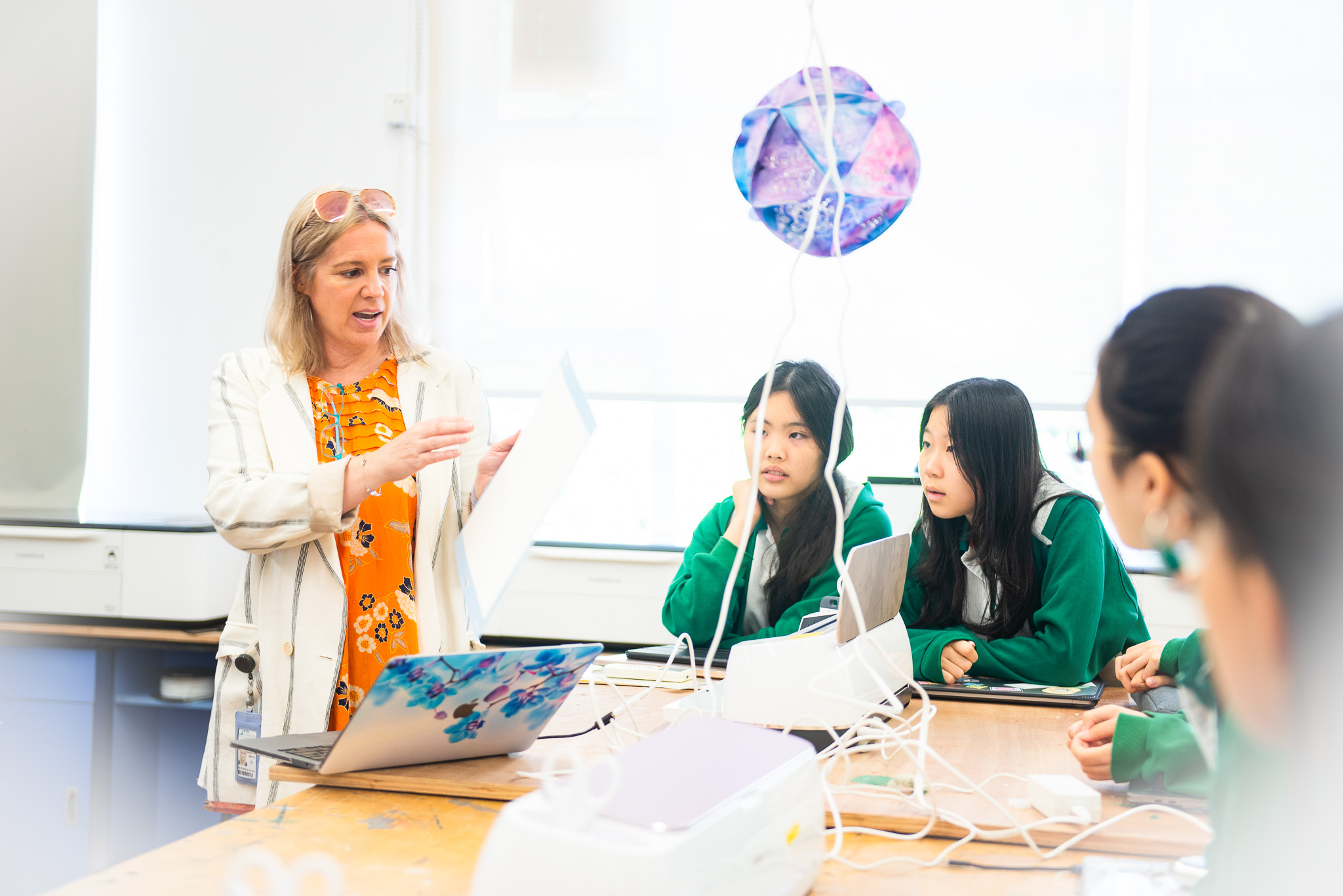Tech Tuesdays with UISG Parents
October 28, 2025

Where students create, invent, solve problems, tinker and explore
Dr. Betsy K. Lee Verb
Director of Innovation & ICT
Design thinking is used to enhance the learning experience and outcomes among children. This type of thinking involves a fluid, interactive, and dynamic problem-solving approach. Young children are especially masters of imagination and intuition. They have not been exposed to stereotypes and corrupted knowledge that tends to kill creativity in adults. It is easy to incorporate design thinking into their natural way of learning. Since young learners are creative and curious, they will ask questions beyond their level of thinking.
The basics of design thinking involve discovering, empathizing, experimenting, and producing results (DEEP). The process requires empathy, defining the problem, ideating possible solutions, creating, prototyping, and testing. Teachers should be at the forefront to grow this type of DEEP thinking methodology among young students and make the classroom experience a showcase for innovation, creativity, imagination, and intuition.

| MonMonday | TueTuesday | WedWednesday | ThuThursday | FriFriday | SatSaturday | SunSunday |
|---|---|---|---|---|---|---|
October 27, 2025
|
October 28, 2025(1 event) Tech Tuesdays with UISG ParentsOctober 28, 2025 Imaginarium 3104 |
October 29, 2025
|
October 30, 2025
|
October 31, 2025
|
November 1, 2025
|
November 2, 2025
|
November 3, 2025
|
November 4, 2025(1 event) Tech Tuesdays with UISG ParentsNovember 4, 2025 Imaginarium 3104 |
November 5, 2025
|
November 6, 2025
|
November 7, 2025
|
November 8, 2025
|
November 9, 2025
|
November 10, 2025
|
November 11, 2025(1 event) Tech Tuesdays with UISG ParentsNovember 11, 2025 Imaginarium 3104 |
November 12, 2025
|
November 13, 2025
|
November 14, 2025
|
November 15, 2025
|
November 16, 2025
|
November 17, 2025
|
November 18, 2025(1 event) Tech Tuesdays with UISG ParentsNovember 18, 2025 Imaginarium 3104 |
November 19, 2025
|
November 20, 2025
|
November 21, 2025
|
November 22, 2025
|
November 23, 2025
|
November 24, 2025
|
November 25, 2025(1 event) Tech Tuesdays with UISG ParentsNovember 25, 2025 Imaginarium 3104 |
November 26, 2025
|
November 27, 2025
|
November 28, 2025
|
November 29, 2025
|
November 30, 2025
|